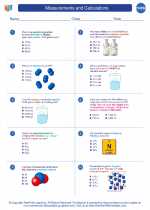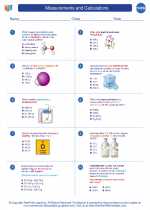Prisms
A prism is a solid geometric figure that has two parallel and congruent polygonal faces, called the bases, and rectangular faces, called the lateral faces. The most common type of prism is a right prism, where the lateral faces are rectangular and the bases are perpendicular to the lateral faces.
Types of Prisms
There are several types of prisms, including:
- Rectangular Prism: This type of prism has rectangular bases and rectangular lateral faces.
- Square Prism: This type of prism has square bases and rectangular lateral faces.
- Triangular Prism: This type of prism has triangular bases and rectangular lateral faces.
Formulas for Prisms
Here are some important formulas related to prisms:
- Volume of a Prism: The volume of a prism can be calculated using the formula V = Bh, where B is the area of the base and h is the height of the prism.
- Surface Area of a Prism: The surface area of a prism can be calculated using the formula A = 2B + Ph, where B is the area of the base, P is the perimeter of the base, and h is the height of the prism.
Examples of Prisms
Here are some examples of real-life prisms:
- A rectangular box
- A bookshelf with rectangular shelves
- A triangular roof
Study Guide
When studying prisms, it's important to understand the following key concepts:
- Identify the bases and lateral faces of a prism.
- Calculate the volume and surface area of different types of prisms.
- Recognize real-life examples of prisms and their properties.
Practice solving problems related to prisms to reinforce your understanding of the concepts.
Remember to pay attention to the specific properties and formulas for different types of prisms, such as rectangular, square, and triangular prisms.
With a solid understanding of prisms and their properties, you'll be well-prepared to tackle problems related to this topic.
.◂Chemistry Worksheets and Study Guides High School. Measurements and Calculations

 Worksheet/Answer key
Worksheet/Answer key
 Worksheet/Answer key
Worksheet/Answer key
